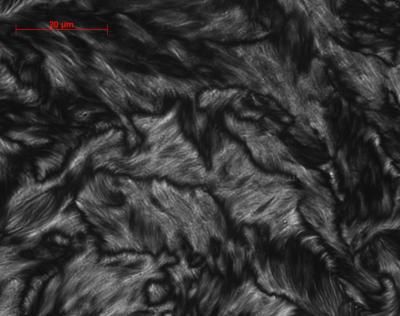Cheaper and easier way found to make plastic semiconductors
Cheap, flexible and sustainable plastic semiconductors will soon be a reality thanks to a breakthrough by chemists at the University of Waterloo.
Professor Derek Schipper and his team at Waterloo have developed a way to make conjugated polymers, plastics that conduct electricity like metals, using a simple dehydration reaction the only byproduct of which is water.
"Nature has been using this reaction for billions of years and industry more than a hundred," said Schipper, a professor of Chemistry and a Canada Research Chair in Organic Material Synthesis. "It's one of the cheapest and most environmentally friendly reactions for producing plastics."
Schipper and his team have successfully applied this reaction to create poly(hetero)arenes, one of the most studied classes of conjugated polymers which have been used to make lightweight, low- cost electronics such as solar cells, LED displays, and chemical and biochemical sensors.
Dehydration is a common method to make polymers, a chain of repeating molecules or monomers that link up like a train. Nature uses the dehydration reaction to make complex sugars from glucose, as well as proteins and other biological building blocks such as cellulose. Plastics manufacturers use it to make everything from nylon to polyester, cheaply and in mind-boggling bulk.
"Synthesis has been a long-standing problem in this field," said Schipper. "A dehydration method such as ours will streamline the entire process from discovery of new derivatives to commercial product development. Better still, the reaction proceeds relatively fast and at room temperature."
Conjugated polymers were first discovered by Alan Heeger, Alan McDonald, and Hideki Shirakawa in the late 1970s, eventually earning them the Nobel Prize in Chemistry in 2000.
Researchers and engineers quickly discovered several new polymer classes with plenty of commercial applications, including a semiconducting version of the material; but progress has stalled in reaching markets in large part because conjugated polymers are so hard to make. The multi-step reactions often involve expensive catalysts and produce environmentally harmful waste products.
Schipper and his team are continuing to perfect the technique while also working on developing dehydration synthesis methods for other classes of conjugated polymers.
Original publication
Other news from the department science
These products might interest you

Eclipse by Wyatt Technology
FFF-MALS system for separation and characterization of macromolecules and nanoparticles
The latest and most innovative FFF system designed for highest usability, robustness and data quality

Spinsolve Benchtop NMR by Magritek
Spinsolve Benchtop NMR
Spinsolve is a revolutionary multinuclear NMR spectrometer that provides the best performance

HYPERION II by Bruker
FT-IR and IR laser imaging (QCL) microscope for research and development
Analyze macroscopic samples with microscopic resolution (5 µm) in seconds

Get the chemical industry in your inbox
By submitting this form you agree that LUMITOS AG will send you the newsletter(s) selected above by email. Your data will not be passed on to third parties. Your data will be stored and processed in accordance with our data protection regulations. LUMITOS may contact you by email for the purpose of advertising or market and opinion surveys. You can revoke your consent at any time without giving reasons to LUMITOS AG, Ernst-Augustin-Str. 2, 12489 Berlin, Germany or by e-mail at revoke@lumitos.com with effect for the future. In addition, each email contains a link to unsubscribe from the corresponding newsletter.





























































